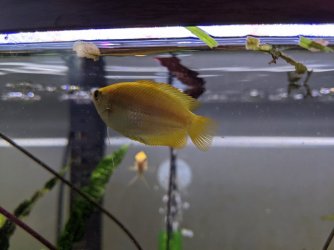KatNor21
Fish Fanatic
I was told I had two females and a male. But what I thought were two female sunset honey gouramis have been slowly circling up against each other on and off all day. Could one of these be a male? They both have a stripe so I thought female. Meanwhile the obvious male is showing some black markings. Can someone explain what's happening here?






 .
.


